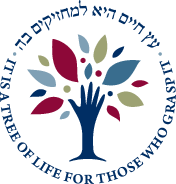Beshalach: How to integrate and not assimilate
Transcript:
He is probably the most outstanding Biblical role model for our times.
This is my view of Joseph. But why am I referring to him at a time when our public Torah reading is from the Book of Shemot? This is because in Parshat Beshalach there is a reference to Joseph. The Torah describes how at the very moment when the Israelites were hurrying to take whatever possessions they could as they were fleeing the land of Egypt, Moses was engaged in a special mission: To find the remains of Joseph.
This is because Joseph had made his family promise him that they would take his remains with them when the nation eventually left Egypt. So the Torah tells us (Shemot 13:19),
“Vayikach moshe et atzmot Yoseph imo.” – “Moses took the bones, the remains, of Joseph with him.”
I would like to add some depth to this statement. Joseph had received the finest possible chinuch, education, within his parents home. It was thanks to that education that he was well prepared for the challenges of life ahead of him. It was thanks to that education that he was able to withstand temptation and always remain true to the traditions of his people.
For Joseph what was important was that he should integrate, but not assimilate.
Joseph engaged with the Egyptian society, in fact so much so that he rose right to the top of that society. Instead of allowing the Egyptian culture and way of life to influence him, his actions always reflected the finest quality of his tradition and families.
No wonder therefore that, of all Biblical characters, the Talmud only refers to Joseph as Yosef ‘Hatzaddik’, Joseph ‘the righteous’.
So in Parshat Beshalach we’re told, “Vayikach moshe et atzmot moshe imo.” – “Moses took the remains of Joseph with him.” Yes, it was important both literally and figuratively that Joseph should not be left behind. Indeed he accompanies us to inspire us right to this very day.
Shabbat shalom.
To receive weekly insights directly from the Chief Rabbi, subscribe using the form below.

